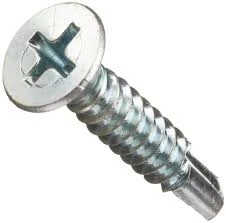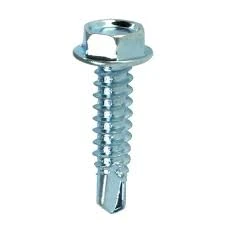types of self drilling screws
Self-drilling screws are essential components in a multitude of applications, from construction to manufacturing, where their unique design enables them to drill their own hole as they are installed. Understanding the different types of self-drilling screws can significantly impact the efficacy and durability of a project, thus making it crucial for professionals and DIY enthusiasts alike to select the right type for their specific needs.

The primary characteristic that differentiates self-drilling screws is their point design. These screws feature a drill bit-like point which varies in shape and cutting capacity, suitable for different materials and thicknesses. Types vary most notably in terms of the material being fastened, the environment, and the specific application.
One of the most common types is the Tek screw, known for its versatility and strength. Tek screws come with a drill-shaped point that makes them ideal for metal-to-metal and metal-to-wood applications, such as roofing and siding. Their hardened steel composition and zinc coating offer superior resistance to corrosion, making them reliable in harsh weather conditions.

Another popular type is the Hex washer head screw, offering high-torque installation with a hex head and integrated washer to distribute load pressure evenly, thus preventing surface damage. Such screws are favored in installations requiring a tight, secure fastening, such as structural supports and assembly lines in manufacturing.
For those working with softer substrates, self-drilling screws designed for wood or thin metal are available, featuring a fine thread and a sharp point to prevent splitting and ensure a firm hold. These are often used in interior projects and lightweight constructions, providing stability without the need for pre-drilling.
types of self drilling screws
The choice of material in self-drilling screws also plays a critical role. Stainless steel options provide unmatched durability and resistance to rust, which is invaluable in marine environments or projects exposed to moisture. Carbon steel screws, on the other hand, offer cost-effectiveness while still maintaining a good level of strength and durability for indoor applications.
In specialized applications, such as fastening onto fiberglass or thin plastic, self-drilling screws with specially designed threads and points are available. These are typically undercut to reduce the material stress and prevent cracking, thereby maintaining the integrity of the materials involved.
Using the correct self-drilling screw not only impacts the strength and longevity of the project but also affects the installation process, as choosing an inappropriate type can lead to fishers in the material or an insecure fastening. Proper selection based on material compatibility and environmental exposure ensures the productivity and safety of the structure.
In conclusion, the wide variety of self-drilling screws available today highlights the importance of selecting the right type for each individual project. Their function blends the operations of drilling and fastening, streamlining processes in construction and manufacturing. Through a better understanding of their applications and specifications, users can enhance the performance, cost-effectiveness, and durability of their projects, reinforcing their position in the market as knowledgeable professionals. Recognizing the distinctions between screw types and their respective uses underscores their expertise and reliability, fostering trust with clients and stakeholders in delivering high-quality results.
-
Weatherproof Plastic Expansion Anchors for OutdoorНавіныJun.06,2025
-
Sustainability in the Supply Chain: Eco-Friendly TEK Screws ProductionНавіныJun.06,2025
-
Load-Bearing Capacity of External Insulation FixingsНавіныJun.06,2025
-
Double Head Bolts: Enhancing Efficiency in Industrial MachineryНавіныJun.06,2025
-
Corrosion Resistance in Chipboard Screws: Coatings for Wholesale DurabilityНавіныJun.06,2025
-
Butterfly Toggle Bolts : Enhancing Structural ResilienceНавіныJun.06,2025
